The Seasonic PRIME Titanium PSU (650W, 750W, 850W) Review: Mythical Performance
by E. Fylladitakis on April 7, 2017 9:00 AM ESTExternal Appearance
The three Seasonic PRIME PSUs that we are reviewing today are almost identical physically, sharing the exact same design and proportions. One can only tell the difference between the models from either the sticker with the electrical specification of the PSU that is found at the top of the chassis, or from the number of connectors at the front side of the units. Do note that the chassis is 170 mm long, which is a bit longer than that of a typical ATX PSU and might be incompatible with some cases, especially ultra-compact designs.
Seasonic is trying to have the PRIME units aesthetically standing out of the crowd mainly by adding chrome parts on the sides and bottom of the chassis. Aesthetics are a subjective matter but we believe that the designer made the PRIME units a bit too shiny, when obviously the concept was to have them looking classy. The sides of the chassis are embossed, with a small vent opening that faces the rear of the unit. These vents are insignificantly small and their direction suggests that they are most likely just decorative elements rather than actual thermal improvements.
The rear side of the PSUs is perforated, with an elongated honeycomb pattern that has been optimized for reduced air drag (i.e. noise). There is a typical on/off switch next to the AC cable connection, and also a push button that turns the hybrid fan mode on or off. With the setting on, the fan will not start until the thermal control circuit defines that it is necessary for the cooling needs of the unit.
The front side of the PSUs are littered with the numerous connectors for their modular cables. Each unit has a different number of connectors that corresponds exactly to the number of cables they come with. The connectors are grouped into three categories; one just for the ATX cable, one for the Molex/SATA cables and one for the PCI-E and CPU cables. All of the PCI-E/CPU connectors are compatible with both of the CPU and PCI-E cables.
Internal Design
All three of the units that we are reviewing today are using the same exact fan, the Hong Hua HA13525M12F-Z. It initially appears to be a common 135 mm fan but has a fluid dynamic bearing (FDB) engine, which combines the low noise operation of the sleeve bearing with the longevity of ball bearing engines. The fan has a maximum rotational speed of 1800 RPM.
Seasonic is the designer and a manufacturer that actually also supplies their products to other brands, so there is no hidden OEM behind the PRIME Titanium units, they are entirely of their own design and production. The three PRIME Titanium units that we are reviewing today are also sharing the same exact internal design. As a matter of fact: many of the components are identical, with the only actual difference being the rating of some of the primary components. The heatsinks are identical, as are most of the secondary side capacitors.
The secondary capacitors are either supplied by Nippon Chemi-Con and Nichicon (Solid state), or Nippon Chemi-Con and Rubycon (electrolytic). The filtering stage also is identical between the three units and consists of six Y capacitors, three X capacitors and two filtering inductors. A surge suppressing MOV is also present. All three units are even using the same two primary conversion bridges, which are comically oversized for the power requirements for any of the three units. The two bridges in each of the units could, in theory, handle up to 4.5kW with a mere 90V AC input. Differences occur with the two APFC capacitors at the primary side: the 650W model is using 2×400V/470μF capacitors, the 750W model one uses 400V/450μF plus one 400V/560μF, and the 850W model uses one 400V/470μF plus one 400V/680μF.
Seasonic PRIME Titanium 650W - Internal View
Technologically, the topology of the PRIME units is not alien by any of today’s standards. The primary inversion stage is a full bridge supported by an LLC resonant converter, and the secondary conversion stage is a synchronous rectifier that generates the 12V line, with DC-to-DC circuits for the secondary voltage lines. Seasonic managed to reach 80Plus Titanium efficiency standards simply by the proper selection of high quality active parts that have minimal thermal losses and cooperate well with each other. The flip side of this is the cost, which we will get to later.
Seasonic PRIME Titanium 750W - Internal View
Seasonic PRIME Titanium 850W - Internal View


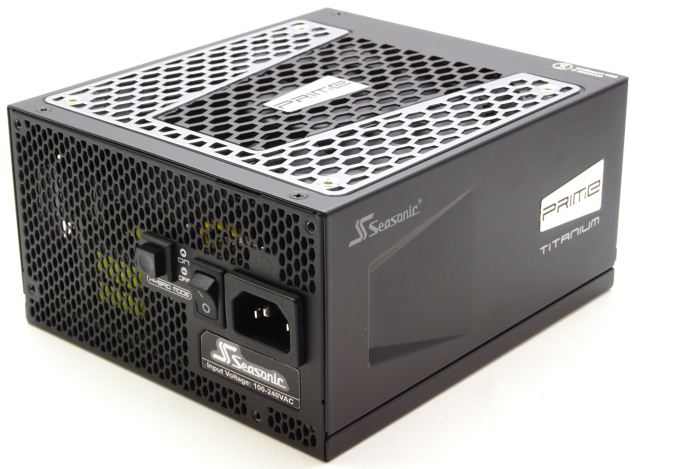
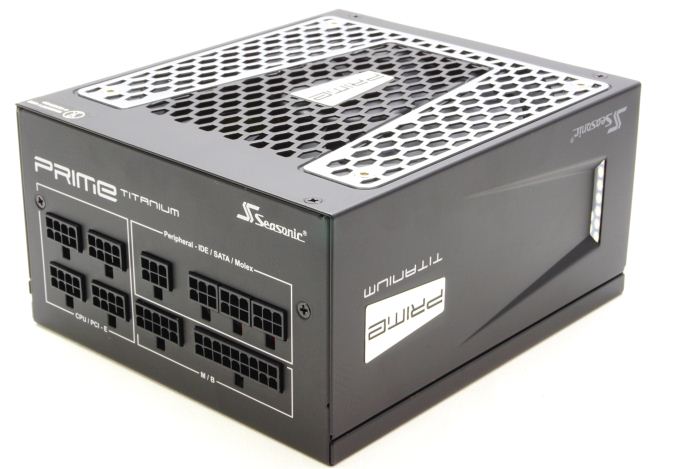
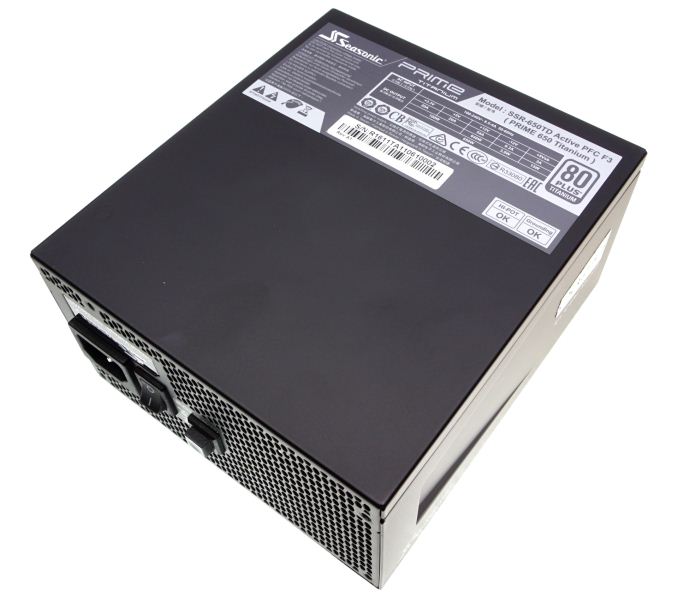

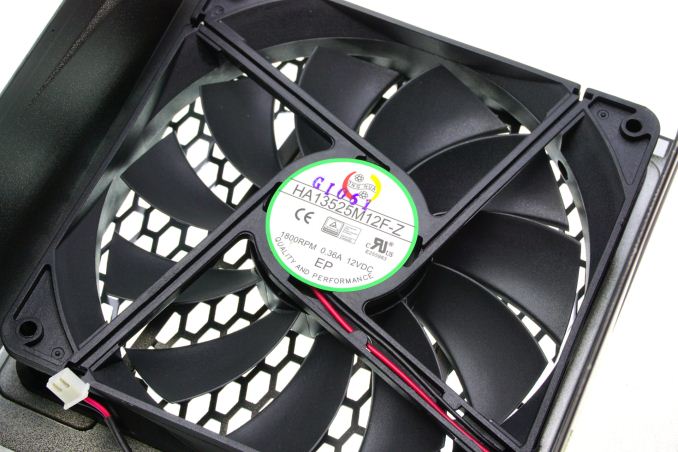
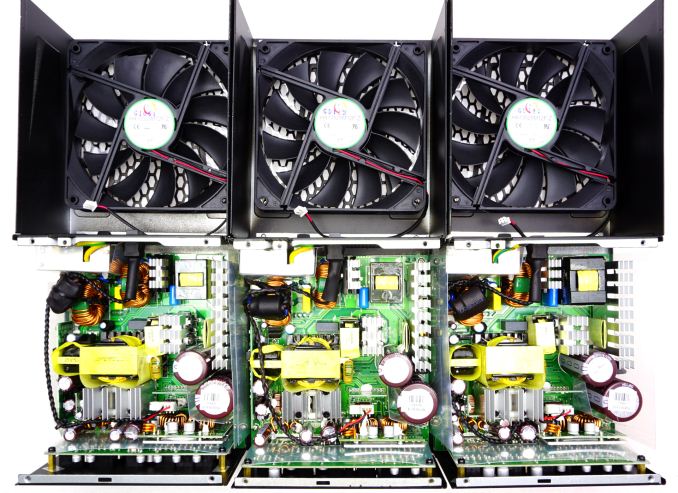
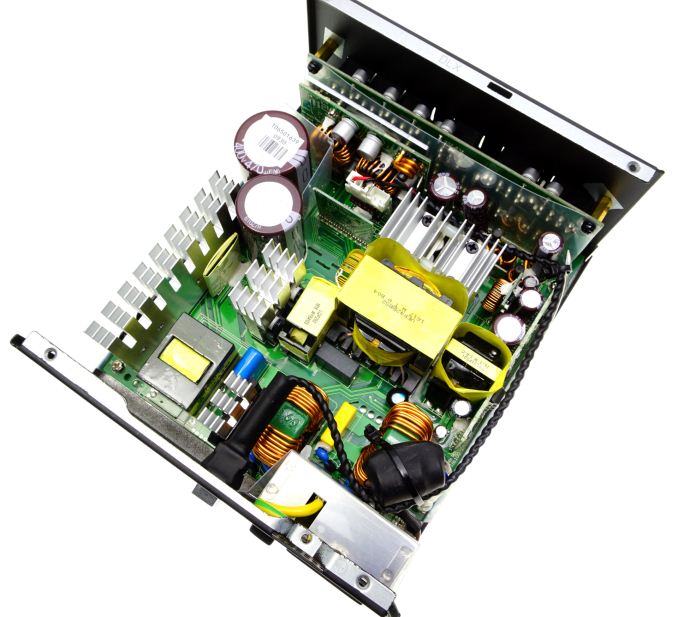
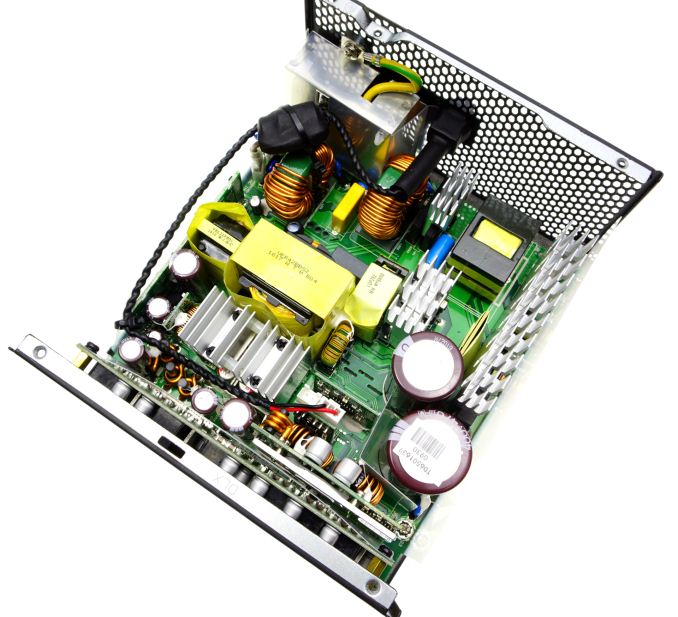
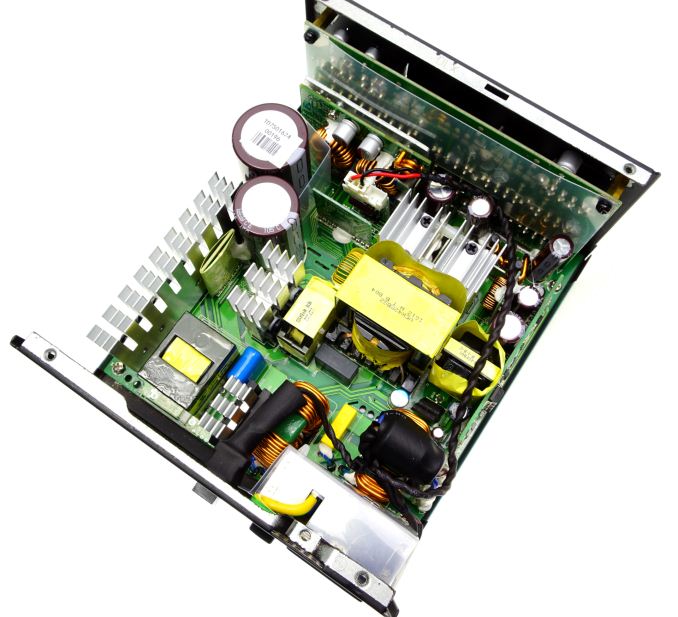
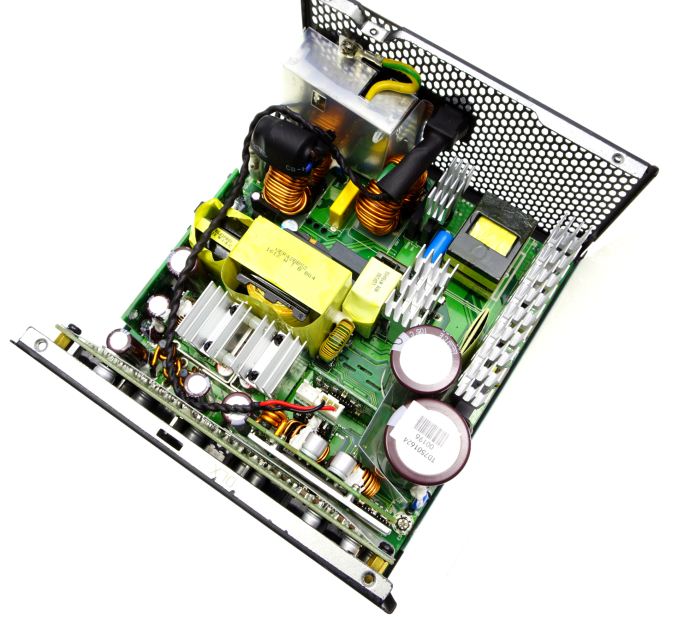
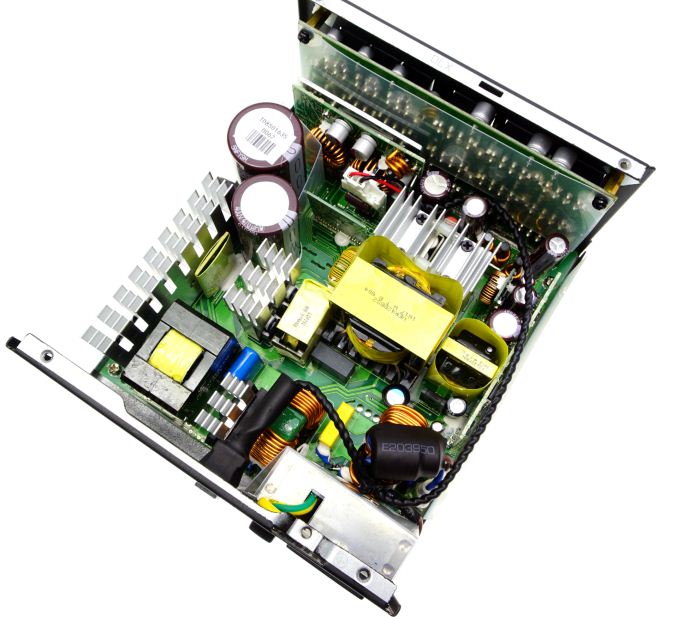
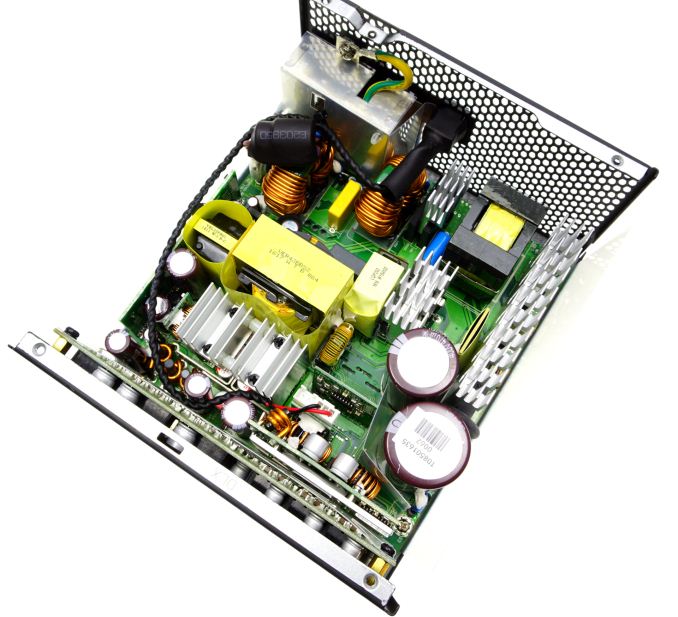








86 Comments
View All Comments
emn13 - Saturday, April 8, 2017 - link
Higher rated PSUs necessarily have reduced low-load efficiency, even PSU's as good as these. So it's highly unlikely the 600W fanless is a 1000W model minus the fan; that would significantly reduce the efficiency at low loads, which, given their aim with these models, I seriously doubt is a tradeoff seasonic would have been willing to make.SkipPerk - Wednesday, May 3, 2017 - link
Seasonic makes a 500W fanless unit, but it is simply a 1350W unit without the fan and some big heat sinks. Enermax also makes robust fanless units up to 500W, but they are basically the same high-wattage unit with the fan removed and larger heat sinks. You might as well buy a 1200W or 1350W PSU that does not spin up until it hits a certain wattage (usually 300W to 400W).Lolimaster - Friday, April 7, 2017 - link
Considering they're titanium, most people just use 1 gpu and don't OC their cpu. They should launch more models, like 450-550w with fan.blahsaysblah - Saturday, April 8, 2017 - link
Not that i wouldnt have minded getting one, but read the wiki on 80 Plus. Gold is plenty fine. Im very happy with my SFX Corsair SF450 PS that has never turned on its fan(GPU is GTX 1060 6GB). Never seemed hot to touch. A good GOLD PS seems to not generate enough waste as heat to matter. Its almost one year since using it in new PC.Of course its positioned nicely, big vent up, for convection, per fine print, and its right under a vent, SilverStone SG13B case. One 140mm fan upfront is only system fan. Its does not get noisy level RPMs either. (just get silverstone atx to sfx adapter that is vented, centers PS, dont get corsair one. last i checked a year ago...)
blahsaysblah - Saturday, April 8, 2017 - link
dang, no edit. i want to add, i made my own set of power cables(all) to de-clutter build. so my experience may be slightly different than yours.djscrew - Friday, April 7, 2017 - link
Oh wow, the reviews are in and our product is exceptional. Now let's see if we can improve these margins! How would we go about that? Let's see... maybe we can find a manufacturer who can do it for less.surt - Sunday, April 9, 2017 - link
Online reviews are absolutely merciless when manufacturers do this, it has killed the sales of more than one vendor over the years. Remember OCZ?Solidstate89 - Friday, April 7, 2017 - link
Interesting. Has Seasonic moved away from Sanyo Denki fans? I thought they used them exclusively?FriendlyUser - Friday, April 7, 2017 - link
Great review as always. Having a good PSU is essential for the longevity of the components. I mean, what's the point of the 16-phase VRM design of your MB if you are feeding it crap power? And how far can you overclock your GPU if your 12V line is full of ripple and noise? The efficiency is the cherry on top.Being a very satisfied owner of a Seasonic Platinum 850W, the only reason I'm not buying the Prime is because the Platinum is already extremely good and it's powering my home server 24/7 for years now.
Lolimaster - Friday, April 7, 2017 - link
You should probably change for the 10-20% efficiency, which your server will run at most of the time.That's why lower than 600w Titanium PSU's are more important than useless 750-850w where low load efficiency is not as good.
Looking at the numbers you're getting 90% efficiency at near 35w load on the 650w vs 90% efficiency at 55w on the 850w model.